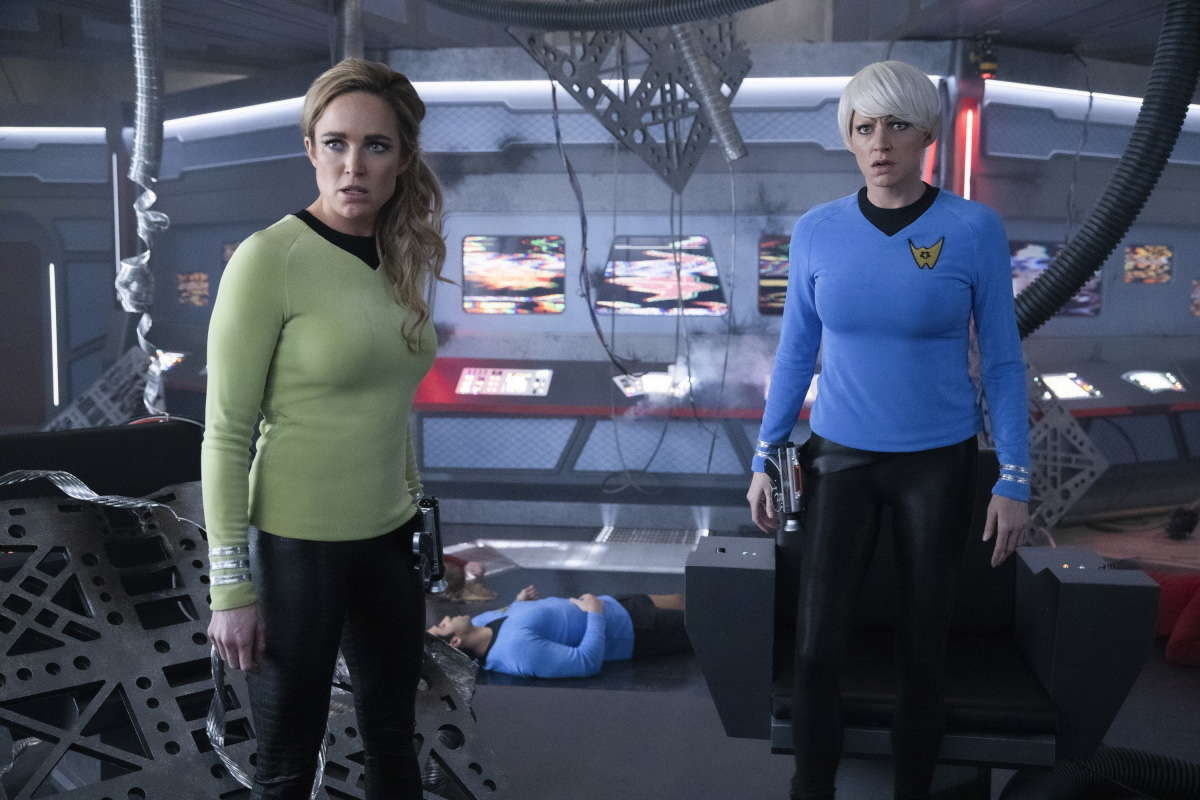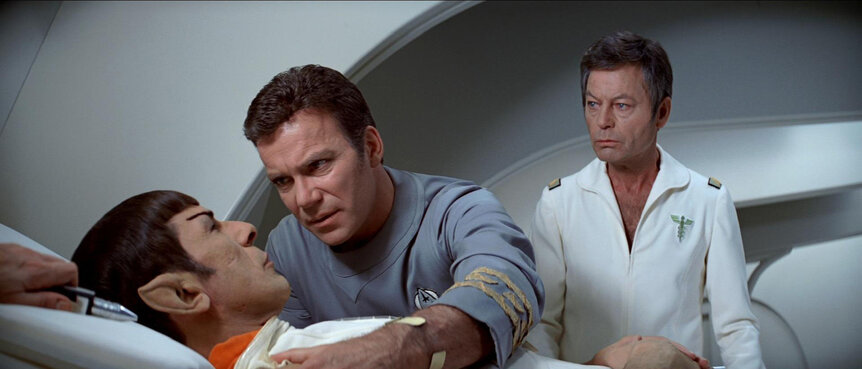Create a free profile to get unlimited access to exclusive videos, sweepstakes, and more!
How Legends of Tomorrow paid tribute to the roots of fanfiction

If you haven’t been tuning in to one of the weirdest and queerest shows on TV, Legends of Tomorrow follows a band of loser superheroes as they travel through time to protect the integrity of the timeline (mostly). In Season 5, which concluded earlier this month, the Waverider, their time ship, is co-captained by Sara Lance and Ava Sharpe, two cutie-pies who happen to be a couple. They’re not the only queer people on the series as it also features John Constantine, Charlie, Gary, Mona, and Zari (at least one version of whom seems to have a thing for Charlie).
The series is probably equally known for its quotidian queerness as it is for its nods to a wide swath of genre content, characters, and storylines. The crew has hopped dimensions, fought demons, gone to hell, visited the future, saved the universe with a queer kiss, tangoed with zombies, formed a giant blue teddy bear with the Totems of Zambezi, and faced down the Fates themselves. The series is a cornucopia of queer genre goodness, so it should come as no surprise that they would eventually tackle one of the pinnacles of genre itself: Star Trek.
In the penultimate episode of Season 5, our intrepid heroes are stuck inside parodies of classic TV like Friends and Downton Abbey as a way for Charlie to protect them from her sisters, the other Fates. Basically, the Fates were able to reconstruct the Loom of Fate, their means of controlling mortals’ lives, when the multiverse contracted after the events of the Arrowverse crossover Crisis on Infinite Earths. And, though the Legends have been trying to keep them from rebuilding it, they fail in their task, and the Fates’ reign of uniformity, conformity, and oppression now dominates the lives of mortals.
The whole episode, titled “The One Where We’re Trapped on TV,” is a campy delight with fun twists on major TV shows, but the Star Trek parody in particular is pretty special. Sara and Ava play the roles of Kirk and Spock, respectively, and the series goes so far as to have them kiss on the bridge.
It’s a significant moment for a few reasons. First, it’s just plain delightful to see all the K/S (the original ship name for Kirk and Spock) sexual tension play out on screen. Second, having queer characters assume the roles of characters who have long been queered by fandom affirms how viewers have read the original characters for decades. And perhaps the coolest part of all is that in so doing, Legends pretty clearly nods to one of the roots of queer fanfic: slash.
Queer women and feminists have long written slash about pairings of two men (who are generally not paired together in canon). It was Star Trek: The Original Series, however, that invented modern slash fandom, frequently with the K/S (Kirk/Spock) pairing, since slash fic earned its name due to the slash placed between the K and the S. Historical records of fanfiction (and queer culture in general, to be fair) are spotty at best. According to SYFY FANGRRLS' own Clare McBride: "It’s difficult to track some early analog slash fandoms; a lot of pieces were written, privately circulated, and then just never found again."
While a lot of fandom at the time wrote off these stories as being fanciful, in the '80s and '90s feminist scholars began studying slash and lending it credence — particularly in its impact on popular culture. Today, we see slash and fanfic through a very different lens than the one used 60 years ago, when these stories were first being written and circulated. Of course, having the internet and major sites like Archive of Our Own (AO3), a verifiable hub for fanfiction writers and readers alike, doesn't hurt either.
If you watch Star Trek: TOS, the sexual tension between Kirk and Spock is palpable and supported textually. As McBride notes elsewhere, “Spock [calls] Kirk ‘t’hy’la,’ a Vulcan word meaning ‘friend, brother, lover.’”
The sexual tension between Kirk and Spock is often explained away by straight fans as camaraderie and devotion, and though queer fans know that’s not the whole story, the show leaves room for a kind of plausible deniability whereby creators can shrug and leave it to interpretation. In contrast, Legends puts the queerness right in your face, centering queer heroes as protagonists, having them kiss, love, and grow together onscreen. Where Star Trek: TOS answers the question of queerness with a “maybe,” Legends says, “Oh hell yes.”
Ultimately, the overt, not-just-between-the-lines kind of queer representation seen on Legends of Tomorrow is vital because it’s undeniable. When Sara kisses Ava on the bridge of the Waverider, their queerness is front and center. That’s what makes the layering of Star Trek upon Legends so powerful. Not only is the parody a sort of onscreen slashfic about Kirk and Spock, but it also affirms the relationship between Sara and Ava as queer co-captains. In the process, the series posits that it’s not so weird to see queer people kiss on the bridge of a starship. And, if you’ve seen Star Trek: TOS, you know that’s really the only thing that was missing in Kirk and Spock’s relationship.


























